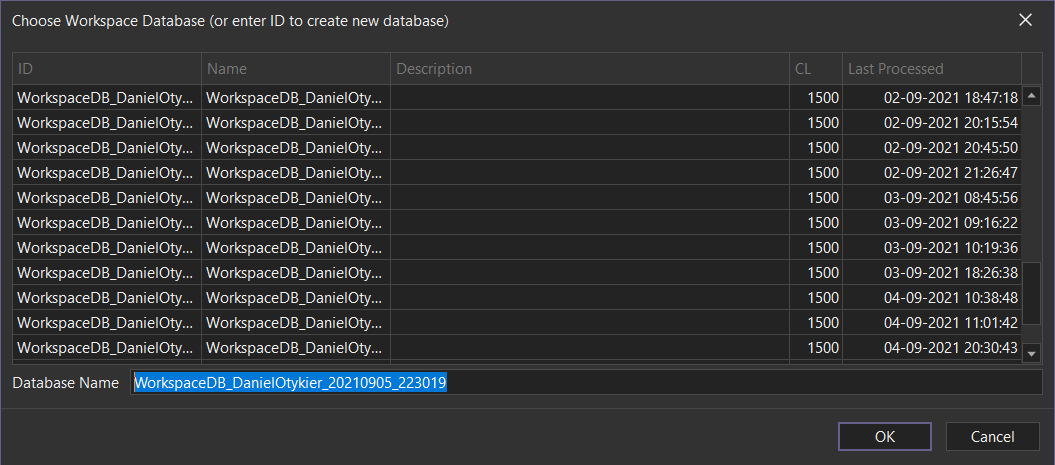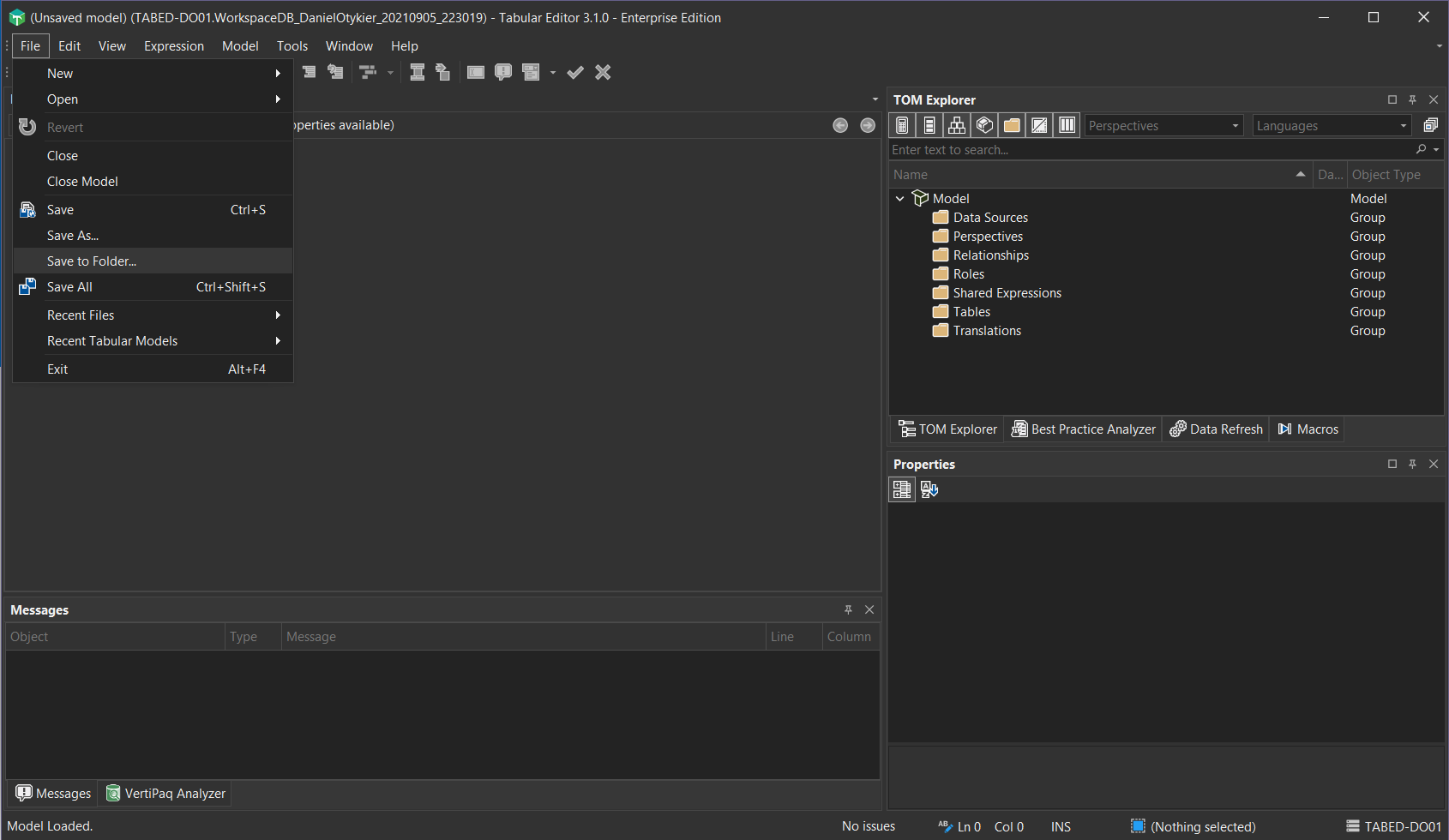Optimizing development workflow using Workspace Mode
- ❌
Desktop Edition - ✔ Business Edition
- ✔ Enterprise Edition
Tabular Editor 3 introduces the concept of workspace mode when creating a new model inside the tool, or when loading a Model.bim or Database.json file of an existing model.
Using workspace mode, Tabular Editor will synchronize your model metadata changes to a workspace database, whenever you hit Save (Ctrl+S), while also saving the metadata changes to the file(s) on disk.
Ideally, each model developer should use their own workspace database to avoid conflicts while developing.
Warning
Do not enable Git integration on the Fabric workspace that you use to host your Tabular Editor workspace databases. This is to avoid Git conflicts as you develop the model, since Tabular Editor makes changes to the workspace database through the XMLA endpoint, and these changes will not be in sync with any underlying Git branch.
Note
For models at compatibility level 1200, 1400 or 1500, we recommend using a local instance of Analysis Services to host the workspace database, such as the one included with SQL Server Developer Edition 2019.
Creating a new model
When you create a new model in Tabular Editor, the "Use workspace database" option is checked by default:

Leaving this checked, you will be prompted to connect to an instance of Analysis Services after hitting "OK". This is the instance of Analysis Services to which your workspace database will be deployed.
Important
If you plan to deploy your workspace database to the Power BI Service XMLA endpoint, make sure you choose Compatibility Level 1560 (Power BI Dataset) in the dialog above.
After entering the Analysis Services server details and (optional) credentials, you are shown a list of all databases currently reciding on the server (or for a Power BI workspace, the list of datasets deployed to the workspace):

Tabular Editor suggests a new unique name for your workspace database, based on your Windows user name and the current date and time, but you are free to change this to a more meaningful name.
After hitting OK, your new model is created and the workspace database is deployed and connected. At this point, hit save (Ctrl+S) to save your model as a Model.bim file. You may also choose the File > Save to Folder... menu item if you intend to store the model metadata in a version control system such as Git.

At this point, you are ready to define data sources and add new tables to your model. Every time you subsequently hit Save (Ctrl+S), the workspace database is updated with the changes, and the file/folder you chose previously will be updated as well.
Information about the workspace database tied to this model is stored in a Tabular Model User Options (.tmuo) file next to the model metadata file. See User options (.tmuo) file for more information.
Opening a Model.bim or Database.json file
If you open an existing Model.bim or Database.json file, Tabular Editor 3 will prompt you whether you want to initiate a workspace database for that file.

Your options are:
- Yes: Connect to an instance of Analysis Services and choose an existing workspace database or create a new one. The next time you load the same Model.bim or Database.json file, Tabular Editor will connect to the same workspace database. Tabular Editor will perform a deployment of the Model.bim or Database.json file onto the selected workspace database.
- No: Tabular Editor will load the metadata in the file offline with no connectivity to Analysis Services.
- Don't ask again: Same as above, but Tabular Editor will no longer ask you to connect to a workspace database the next time you open the same Model.bim or Database.json file.
- Cancel: The file is not loaded at all.
Information about whether to connect to a workspace database for a given model, and which workspace server and database to use is stored in the Tabular Model User Options (.tmuo) file.
Warning
When choosing a workspace database, Tabular Editor 3 will deploy the loaded model metadata onto that workspace database. For this reason, you should never use a production database as your workspace database. Moreover, we recommend using a separate Analysis Services instance/Power BI workspace for your workspace databases.
Advantages of workspace mode
The main advantage of workspace mode, is that it allows Tabular Editor to stay connected to an instance of Analysis Services. In other words, Tabular Editor 3's new connected features are enabled. But even if you choose not to use these features, it is much easier to synchronize an instance of Analysis Services for purposes of testing your changes. All you have to do is hit Save (CTRL+S). This is similar to when Tabular Editor opens model metadata directly from an instance of Analysis Services, but with workspace mode, the model metadata is simultaneously saved to disk.
Note
When a refresh operation is in progress, Tabular Editor cannot synchronize the Analysis Services instance (refresh operations block other write operations). However, hitting Save (CTRL+S) while such an operation is under way will still save the model metadata to disk, while using workspace mode.